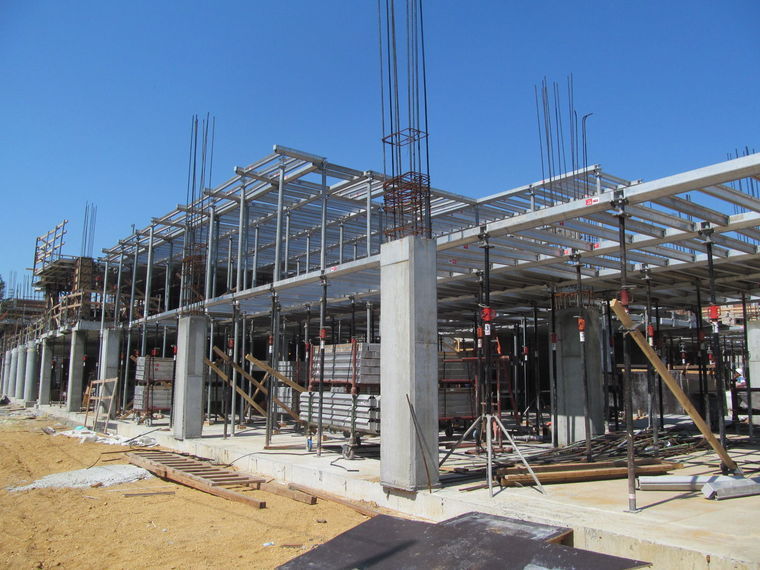The Mineola School District is searching for a company to conduct a study that will allow the district to determine the number of children that will enter the district due to the construction of new apartment complexes in the area.
Although the village commissioned Phillips Preiss Grygiel LLC to conduct a study released in February that evaluated the impact of new residential developments, outgoing school board President Artie Barnett said the study does not contain reliable data for the district.
The Phillips Preiss Grygiel study, which relies on data from a 2006 study from Rutgers University, determined that 1,424 new units planned or under construction would yield anywhere between 28 to 299 school-aged children to enter the district.
Barnett said that using the study may not provide the board with accurate data, as it was conducted prior to the crash of the housing market, which affected the economy on both a local and national scale.
He also said he was also concerned that the Phillips Preiss Grygiel study relies on data for both owned apartments and rental apartments, even though all the developments looking to enter the area have been rental buildings.
“The numbers have been all over the place depending on who reads the study,” Barnett said. “We can’t be counting co-ops and condos in the study when all of the buildings we’re talking about are rentals.”
Currently, Nelson, Pope and Voorhis LLC is working on an environmental study to evaluate The Bridge, an apartment complex that will have 148 units, 16 of which will be two-bedroom units.
The remaining units, Barnett said, will be one-bedroom or studio apartments. In a letter sent from the firm to the school district, the firm stated that it foresees 12 additional students entering the district with the establishment of the new building.
This number stands in contrast to the eight school-aged children projected to enter the district from the creation of the Village Green, an apartment complex recently approved by the Village of Mineola that will have 150 two-bedroom units, according to Barnett.
“It will have twice as many apartments [as The Bridge], and 10 times as many two bedrooms,” Barnett said. “But they project less children.”
The eight-story mixed use Village Green project had been the subject of a series of heated public hearings at which Barnett, Mineola School Superintendent Michael Nagler and many residents opposed the project, raising concerns about traffic, building size, aesthetics and the impact tax breaks could have on Mineola school district.
Four of the board’s five members, including Mayor Scott Strauss, voted to approve the project, citing studies that suggested the Village Green would benefit local businesses and have minimal impact on traffic and school enrollment.
The four board members called the project an important step toward realizing the Master Plan, which the village enacted a decade ago as a roadmap to revitalizing the downtown.
Barnett said the district is looking to hire a firm that will be able to evaluate the different studies and explain what they say so that the district will be able to properly assess the number of students entering the district if the new developments are approved.
“We can see that the construction is not going to slow down. We need to have a realistic idea of how many kids we have to accommodate,” he said.
Barnett said the district expects the greatest influx of students at Hampton Elementary School, as most of the elementary-aged children living in the complexes would go there due to the district dividing line at Jericho Turnpike. He noted that demographics indicate that younger families are more likely to be renters, resulting in more students entering the elementary school than any other school in the district.
“We don’t know what we’re going to get,” he said. “We want to be prepared for it, and we want to be able to pay for it.”
Barnett said his greatest concern with the new developments have been with the tax breaks provided developers accompanied by payment-in lieu-of-taxes agreements — or PILOTs. Under PILOTs, developers make payments to municipalities at rates significantly lower than if they were paying taxes.
Barnett said the school district currently cannot count a PILOT building as growth in the community, meaning that they cannot raise the tax levy despite more students entering the district from the development.
He said that according to the New York State School Board Association, which sent the district a recap of legislation recently approved by the state Legislature, the district may now be able to count the PILOT buildings in its growth factor. Whether the law will also allow the district to count buildings built in 2012, 2013 and 2014, Barnett said, is another question.
“From the sounds of it, they are going to fix the law,” Barnett said. “It’s all we’ve been saying for the past 10 months. If they fix the law, we don’t have an issue.”
In several exchanges with Barnett prior to the new legislation, Strauss maintained that school districts could count PILOT buildings as growth in the community.
Regardless of a possible change in legislation, Barnett said, the district still wants to go ahead with the study.
He said on July 2 Nagler and Assistant Superintendent for Finance and Operations Jack Waters will present proposals for firms to the Mineola School Board and discuss what the firms offer, what the district will need from the firms, and what the cost will be to conduct the study.



